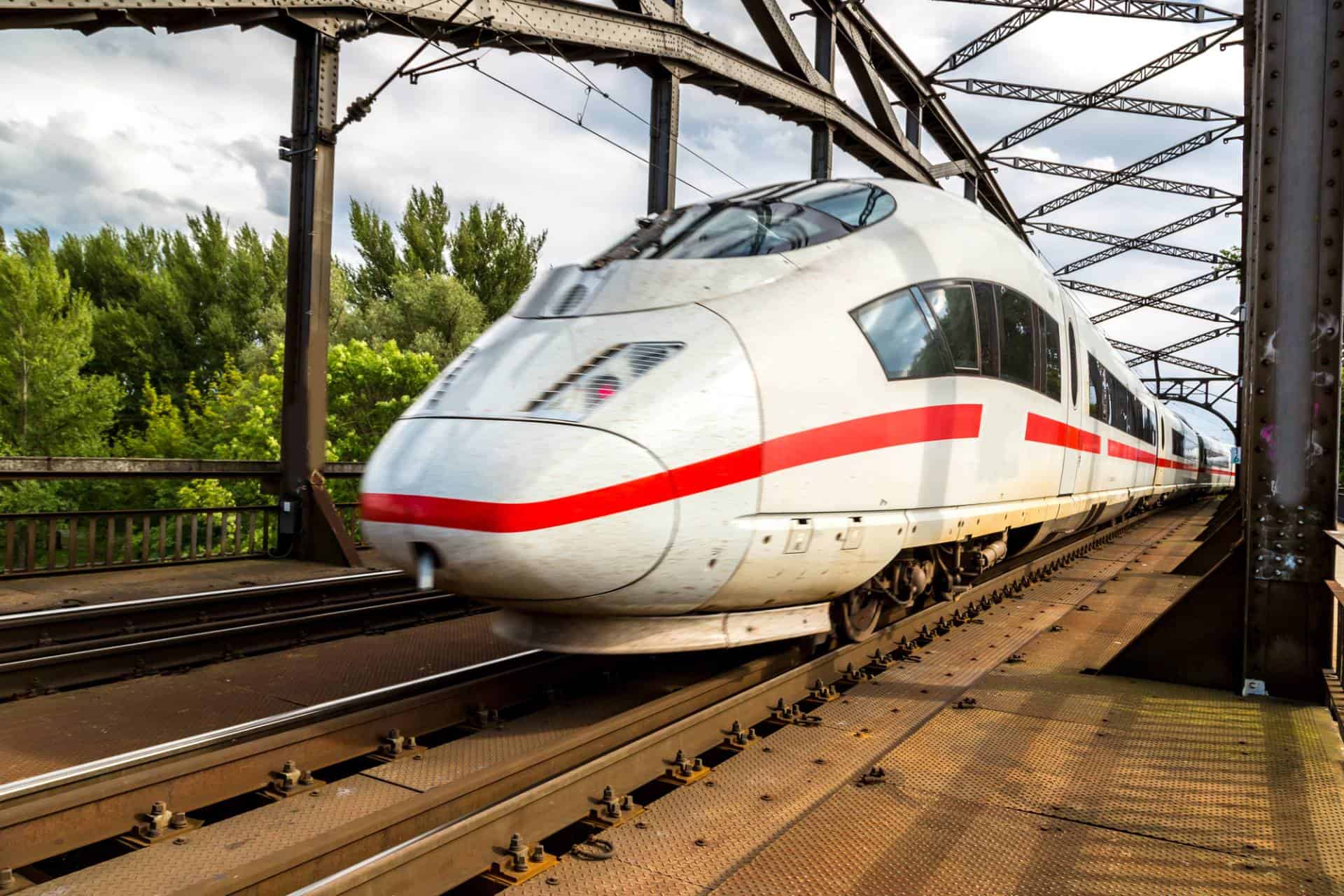
Exploring the Fastest High Speed Trains: High-Speed Trains in Europe
Europe boasts an extensive network of high-speed trains, revolutionizing rail travel across the continent. From the sleek Eurostar connecting London to Paris, to the cutting-edge AVE trains speeding through Spain, European high-speed rail has transformed the way people journey across borders. Among these marvels of modern engineering, there's always curiosity about which train claims the title of the fastest in Europe. In this comprehensive exploration, we delve into the world of European high-speed trains to uncover the champion of speed, examining the technology, routes, and records that define these remarkable feats of transportation. You can book a High-Speed Train on Europe revealed Train Services.
While many of Europe’s high-speed trains like the TGV (Tren du Gran Vitesse in France), ICE (Intercity Express in Germany), AVE (Alta Velocidad in Spain), Eurostar, Thalys, and the EMU are similarly designed 300kph plus trains, most haven’t had top recorded speed trials performed. However, the TGV and ICE do happen to have top recorded speeds of:
TGV-Atlantique-France: 515 kph./320 mph.This occurred in 1990
ICE -Germany-408 kph/ 255mph
AVE-By the way, in 2001 the AVE Seville-Madrid line transported 3,237,000 passengers and experienced a 6.6% increase over the year prior in 2000. Only 22 of the more than 9,000 trips have arrived late over the last year, with 99.8% of the trains arriving within the promised 5 minutes of arrival time or else the ticket is refunded and the journey is free.
Evolution of European High-Speed Rail:
The inception of European high-speed rail traces back to the late 20th century, with pioneering projects like France's TGV (Train à Grande Vitesse) and Germany's ICE (InterCityExpress). These first high-speed trains set the stage for a rapid expansion of high-speed rail networks across the continent. The Channel Tunnel Rail Link, inaugurated in 1994, allowed Eurostar trains to zip between London and Paris, marking a new era of international high-speed travel. Since then, European countries have invested heavily in developing dedicated high-speed lines, facilitating seamless connections between major cities and reducing travel times significantly. If your in Italy you can book a high speed train from Venice to Rome: Day trip and happy hour.
The Quest for Speed: Setting Records and Pushing Limits:
European high-speed trains have continually pushed the boundaries of velocity, aiming to set new world speed records for conventional rail travel. The introduction of advanced passenger trains like the Italian Pendolino and the Spanish AVE heralded a new era of rapid transit, with maximum speeds exceeding 300 kilometers per hour. Notable examples include the record-breaking run of France's TGV V150, which reached a staggering speed of 574.8 kilometers per hour in 2007, albeit on a specially modified test track. While these record-breaking feats showcase the potential of European high-speed rail, commercial services typically operate at slightly lower speeds, balancing efficiency with passenger comfort and safety.
The Need for Speed: Demand and Infrastructure:
The demand for high-speed rail in Europe continues to soar, driven by the continent's dense population centers and the necessity for sustainable transportation options. Major high-speed routes, such as the Thalys between Paris, Brussels, and Amsterdam, or the Eurostar linking London with Brussels and Paris, witness a constant stream of passengers seeking fast, reliable travel. To accommodate this demand, European countries have invested heavily in expanding their high-speed rail infrastructure, with projects like Rail Baltica aiming to connect the Baltic states with the rest of Europe through a dedicated high-speed line. These investments not only enhance connectivity but also contribute to economic growth and environmental sustainability.
The Fastest of Them All: European High-Speed Champions:
Among the plethora of high-speed trains traversing European tracks, several contenders vie for the title of the fastest. The Siemens Velaro, used by various operators including Germany's ICE and Spain's AVE, boasts a top speed of 350 kilometers per hour, making it one of the swiftest in regular commercial service. Similarly, the Alstom TGV series, synonymous with French high-speed rail, reaches speeds of up to 320 kilometers per hour, offering rapid journeys across the French countryside. Meanwhile, the Frecciarossa in Italy dazzles passengers with its sleek design and maximum speed of 400 kilometers per hour, setting the standard for high-speed travel in the Mediterranean region. High speed train services like the ICE train offer efficient and comfortable train travel for passengers seeking high-speed service.
Beyond Speed: The Future of European High-Speed Rail:
While speed remains a crucial aspect of high-speed rail, the future of European high-speed trains extends beyond velocity. Modern trains like the Alstom Pendolino and the Spanish Alvia prioritize comfort, efficiency, and sustainability alongside speed, offering passengers a holistic travel experience. As technology advances, newer generations of high-speed trains are poised to revolutionize rail travel even further, with innovations in aerodynamics, propulsion systems, and onboard amenities. With ongoing projects to expand high-speed networks and improve connectivity across European countries, the era of fast, efficient, and environmentally friendly rail travel is set to thrive in the years to come.
In conclusion, the fastest train in Europe is not merely a symbol of velocity but a testament to innovation, ingenuity, and the collective effort of European nations to redefine the possibilities of rail travel. From the sleek Eurostar hurtling through the Channel Tunnel to the cutting-edge Frecciarossa streaking across the Italian countryside, European high-speed trains embody the pinnacle of modern transportation. As these marvels of engineering continue to evolve and expand, they pave the way for a future where borders blur, distances shrink, and the journey itself becomes as remarkable as the destination.










